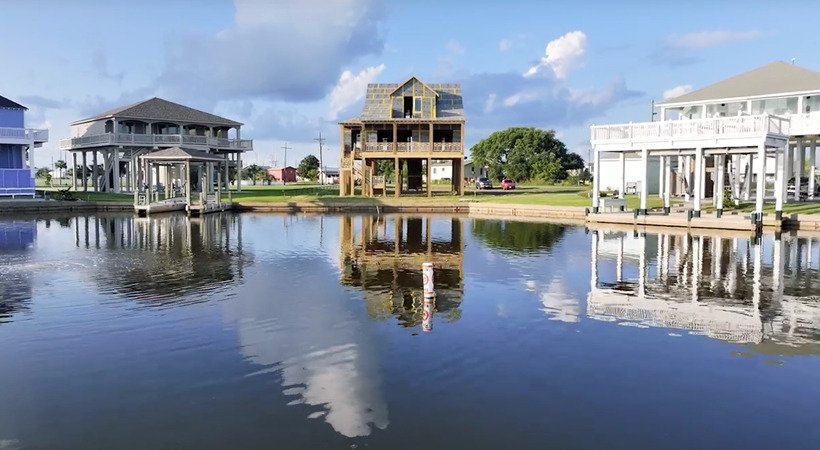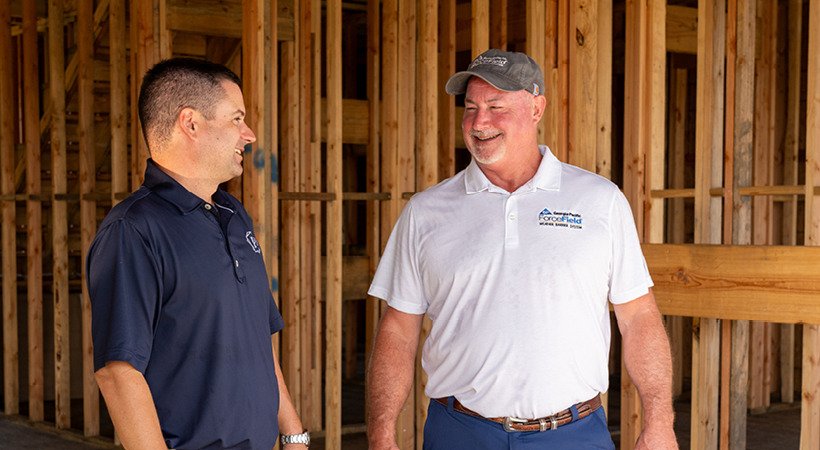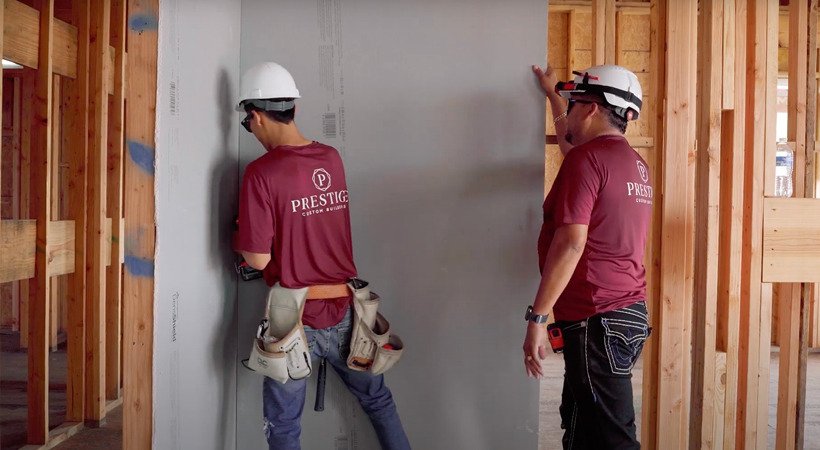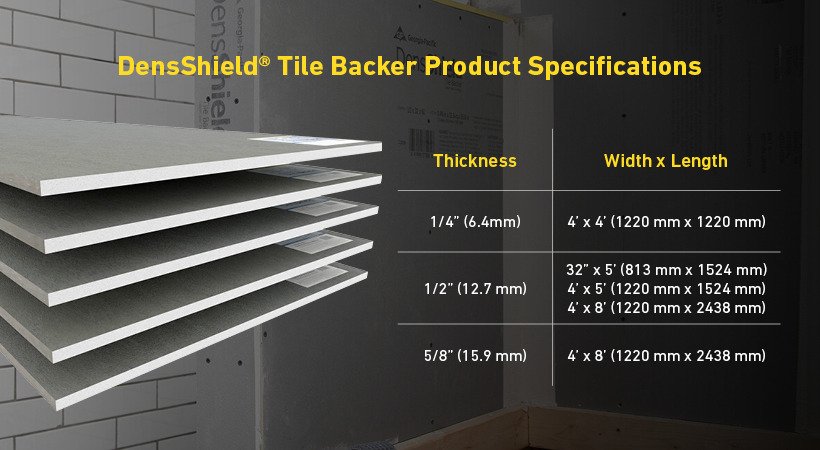Why Prestige Custom Builders Uses DensShield® Tile Backer Board for Their Coastal Projects

Landon Wright, owner and president of Prestige Custom Builders, takes his time picking out building materials. He not only wants to create the most appealing homes for his clients, he wants to keep them safe. Structures built in hurricane-prone areas like Crystal Beach, Texas, must be prepared for strong winds, flooding and high humidity. With some of his homes only 25 feet from the water, Landon is always thinking about how to mitigate water damage. To meet and exceed the minimal height required by building codes, the Prestige team constructs their homes on pilings.
Hurricane zone materials
While building codes vary from state to state, FEMA (the Federal Emergency Management Agency) has issued federal building material requirements made in accordance with the National Flood Insurance Program (NFIP) for areas designated as Special Flood Hazard Areas (SFHA)1. Participation in the NFIP is voluntary and your community must meet certain criteria to qualify.
Regardless of participation, building homes close to the water means construction materials may be susceptible to moisture penetration. If it’s not from flooding or a storm, damage can also occur from increased humidity and water vapor. So, when Landon started building on the coast, he was always on the lookout for the best materials he could find to deal with these threats.

Finding the right materials: The International Builders’ Show
Landon met Scott Collingwood, Territory Sales Manager for Georgia-Pacific, at the 2022 International Builders’ Show in Las Vegas, Nevada. Before the meeting, Landon perceived Georgia-Pacific as primarily a mass producer of plywood and lumber. After talking to Scott, he discovered that Georgia-Pacific had additional innovative building products that could help him to mitigate risk for his custom coastal homes.
Landon started out by adopting ForceField® Weather Barrier System for the exterior walls and roofs on all his homes. The new system saved him time and money, and helped prevent water and air intrusion to the entire building envelope. After his success figuring out product logistics and application nuances with Scott, Landon knew he had found the right materials partner in Georgia-Pacific.
Because Landon was open to trying other solutions in his homes, Scott introduced him to DensShield® Tile Backer to help prevent moisture damage behind his tiled surfaces.


Why DensShield® Tile Backer boards?
Integrated mold and moisture resistance
DensShield® Tile Backer boards are engineered to prevent moisture damage to the sub-floor or wall cavity if moisture seeps through grouted tile. It meets the requirements of International Building Code (IBC) and International Residential Code (IRC) for tile backer in wet areas, like kitchens and bathrooms. In addition, DensShield® Tile Backer has been designated as acceptable by FEMA for use in SFHAs like coastal Texas. The fiberglass-mat gypsum board provides increased moisture resistance with less mold growth than paper-faced boards. You can find out more about this approval in our technical bulletin.
Landon was impressed with the quality of DensShield® Tile Backer. The Prestige team had previously used cement board behind their tiling. Because cement backers are very porous, they require a secondary vapor barrier by TCNA (Tile Council of North America) in wet areas to protect the wall cavity. Making the switch to DensShield® Tile Backer boards cut out extra labor and materials needed when using cement board.
“We started integrating it into our homes on a job-by-job basis, making sure that we were able to test out the product and then fully integrate it into our daily build.” – Landon Wright, Owner/President, Prestige Custom Builders
Lightweight and timesaving
When working with the new product, the Prestige team noticed it was lighter and created less dust than other backer boards. Because DensShield® Tile Backer is lightweight and doesn’t require an extra moisture barrier, it takes fewer people to install. And, since it doesn’t leave debris or require special tools to cut it, like cement board does, there is less likelihood of any damage to the tub. Landon’s crew could bring the material inside of the home, only needing to score and snap it for quicker installation.
“We made the switch from a cement backer board over to DensShield®, primarily because of the durability of the material, the GP product that they stand behind. And also, the size. Whenever it came in a 4’ x 8’ sheet versus a traditional 3’ x 5’ sheet—that was a big selling point for us.” – Landon Wright, Owner/President, Prestige Custom Builders
Multiple applications
One of the things Landon appreciated the most was that the new boards came in 4’ x 8’ sheets. He wanted a backer board that would hit the 8-foot mark because all the bathrooms in his custom-built homes are tiled to the ceiling. A large tile backer board allows for more wall coverage and less waste. According to Landon, the board’s larger size helps to reduce the likelihood of water penetration into the wall cavity as well.
DensShield® Tile Backer can also be used under tile floors. Designed to withstand the weights of typical residential and light commercial floor tile installations, it successfully passes ASTM C627, which is a standard test method used to evaluate the performance of ceramic floor tile installations for durability under dynamic loads.
“[Georgia-Pacific produces] a great product … and it’s one of those things where the service is second to none.” – Landon Wright, Owner/President, Prestige Custom Builders

Materials for tough conditions
As Landon’s business continues to grow, he plans to stick with Georgia-Pacific. He continues to use ForceField® Weather Barrier System and DensShield® Tile Backer on his projects. Watch the video for more information on Prestige’s coastal construction projects. If you’re ready to use DensShield® Tile Backer in your next project, find it at these retailers nationwide.
1. https://www.fema.gov/emergency-managers/risk-management/building-science/national-flood-insurance-technical-bulletins